Yellow
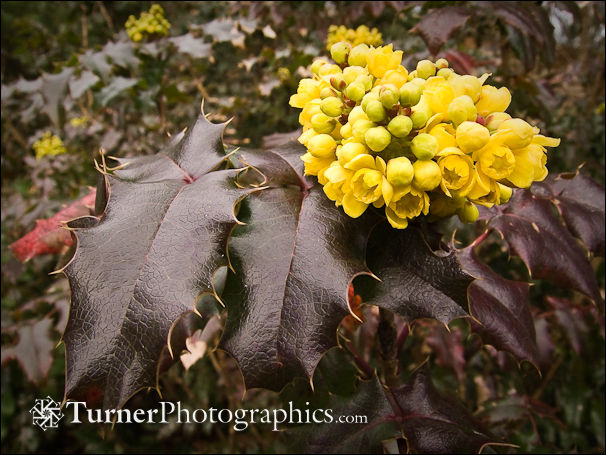
It’s January 19 and spring is starting to pop. We’ve had several warm days recently, with high temperatures around 50 and some mixed sun and rain. On my walk to the post office this afternoon to mail a couple of fine art prints to customers I perambulated along the Whatcom Creek trail and spied these bright yellow blossoms.
Shining Oregon-grape, Mahonia aquifolium, is one of our two native members of the genus here in Bellingham. It’s the earliest to bloom, although not as early as some of the garden Mahonias with even bigger and more spectacular flower clusters. The leaves sometimes take a beating when we have really cold days, but they’ll be replaced with fresh foliage when spring really arrives later on.
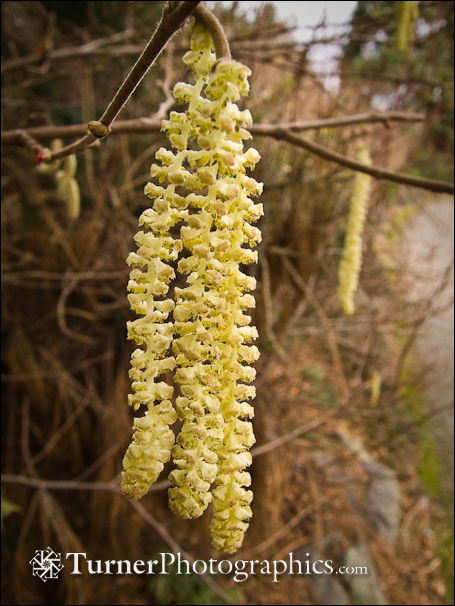 Hazelnuts, aka Common Filberts, also bloom very early in the spring. Well, maybe it is still officially winter. This is the non-native Corylus avellana. It is cultivated commercially around here, but has also naturalized into the wild all over the place.
Hazelnuts, aka Common Filberts, also bloom very early in the spring. Well, maybe it is still officially winter. This is the non-native Corylus avellana. It is cultivated commercially around here, but has also naturalized into the wild all over the place.
Common Filbert is hard to distinguish from Beaked Filbert, our native species, unless you catch them in fruit. But Common Filbert starts blooming in December and Beaked Filbert doesn’t usually get going until March. For more details on distinguishing them see Botanical Electronic News #389 and scroll down to a comparative table.
Both Filberts bear separate male and female flowers on the same plant. What you’re seeing here are the male flowers, full of pollen. The female flowers are tiny and look like little red bristles. You might not even see them unless you’re looking for them.
I made both of these photographs with my Canon S70 pocket camera, shooting RAW. It can be a little tricky to get the autofocus to make the part of the photo you want to be sharp actually in focus. I used the camera’s macro mode, set by the button with the little tulip symbol, and the lens zoomed all the way out. That’s the standard way to do closeups with most pocket cameras. The trick is to “steer” the autofocus point. On the Canon I pressed the SET button and then used the direction buttons around it to move the focus point (the green box) to my main subject. It takes a little practice to get the hang of it.
Because I was working so close, I couldn’t really put my subject in the center, focus, and then reframe because the distance to the lens would change and I’d lose sharpness. I was in aperture priority mode and stopped down to f/6.3 for these if I remember correctly. For the Hazelnut I hold onto the branch and the camera together to keep the distance from changing in the breeze.
Both of these photos have had a little processing in Adobe Lightroom.
Now that stuff is starting to bloom, all you flower nuts need to get out and start shooting. OK, you don’t really need blossoms for creative images as my friend David Perry points out on his blog and Facebook page. Or maybe you’re just drooling over little green blades of crocus like Mary Ann Newcomer over in Boise. Just find some inspiration and go to it.
Oh yeah, that fancy word in the first paragraph was the word of the day for January 19 at thesaurus.com. Perambulate sounds so much nicer than plain old walking.




 Just a block up the street from us is the First Plymouth Congregational Church. This patch of heather has been part of their garden for about as long as we’ve been in Bellingham — 19 years. It’s come into full bloom in the last week or so and will continue to be in bloom for at least a couple of months.
Just a block up the street from us is the First Plymouth Congregational Church. This patch of heather has been part of their garden for about as long as we’ve been in Bellingham — 19 years. It’s come into full bloom in the last week or so and will continue to be in bloom for at least a couple of months.

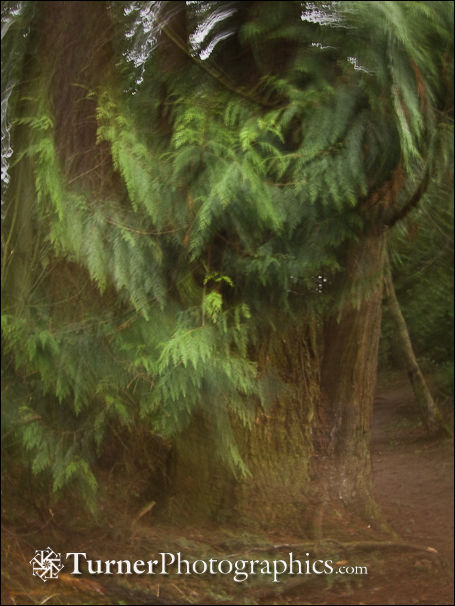 My favorite trail through the park has many old trees. They may not be true old-growth, but they’re certainly approaching it in size and majesty. Mostly they’re Douglas-firs and Western Red-cedars. This one is a cedar.
My favorite trail through the park has many old trees. They may not be true old-growth, but they’re certainly approaching it in size and majesty. Mostly they’re Douglas-firs and Western Red-cedars. This one is a cedar.
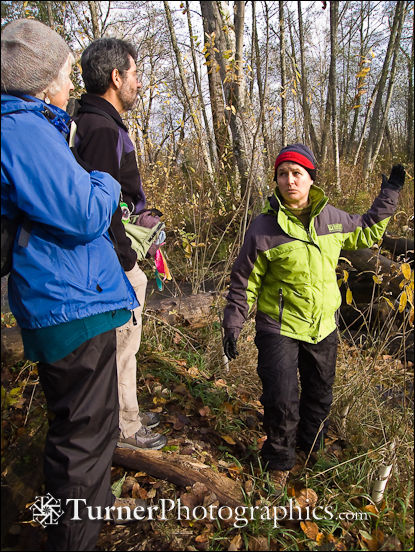 Vikki Jackson was our tour leader. She’s seen here explaining about an older man-made wetland pond constructed several years ago to provide wildlife habitat.
Vikki Jackson was our tour leader. She’s seen here explaining about an older man-made wetland pond constructed several years ago to provide wildlife habitat.

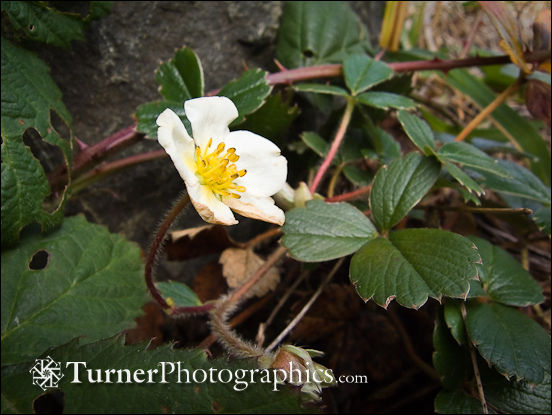
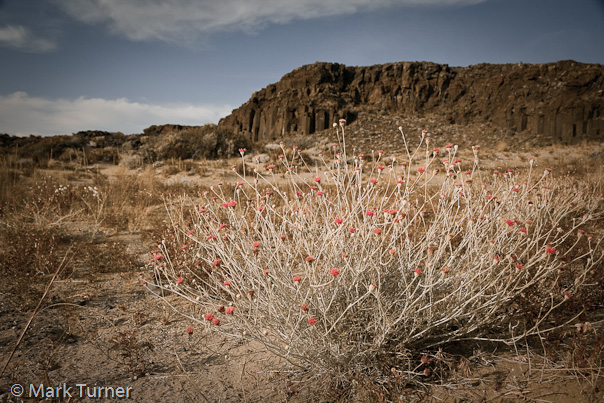
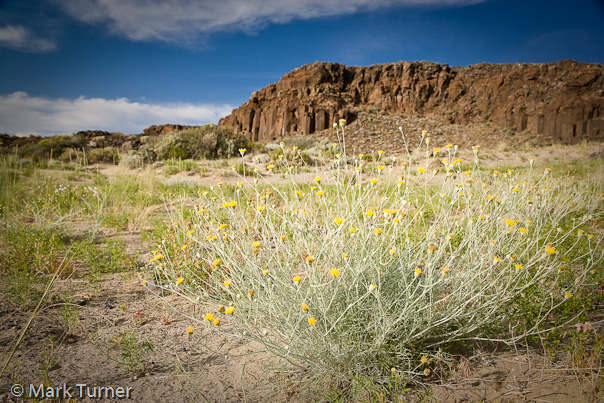
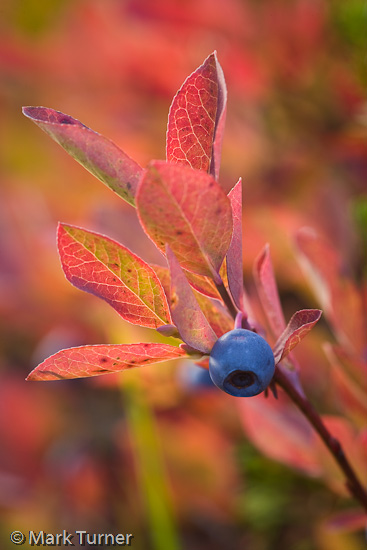 I had a family portrait session reschedule from Sunday afternoon, so I took a look at the clouds to the east and decided to head up to Heather Meadows and Artist Point for some landscapes. I didn’t get out of town until after 2 pm, which was fine since I really wanted sunset at 7:10.
I had a family portrait session reschedule from Sunday afternoon, so I took a look at the clouds to the east and decided to head up to Heather Meadows and Artist Point for some landscapes. I didn’t get out of town until after 2 pm, which was fine since I really wanted sunset at 7:10.
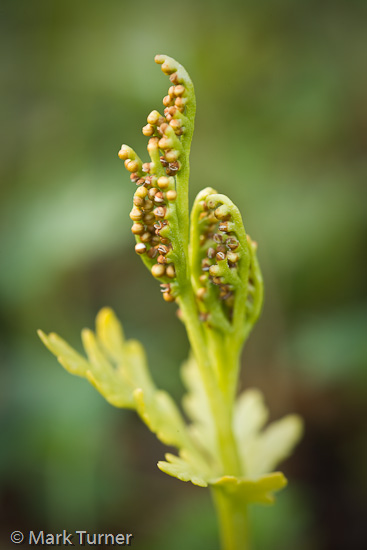 The Grapeferns (right) get their name because their spore-bearing structures resemble bunches of grapes. This little specimen is Lanceleaf Grapefern, Botrychium lanceolatum. It’s only about 3 inches tall and very easy to miss. I spied four plants just off the Bagley Lakes Trail. I probably would have missed them if it weren’t for another larger species of Botrychium that caught my eye within a foot of the trail.
The Grapeferns (right) get their name because their spore-bearing structures resemble bunches of grapes. This little specimen is Lanceleaf Grapefern, Botrychium lanceolatum. It’s only about 3 inches tall and very easy to miss. I spied four plants just off the Bagley Lakes Trail. I probably would have missed them if it weren’t for another larger species of Botrychium that caught my eye within a foot of the trail.

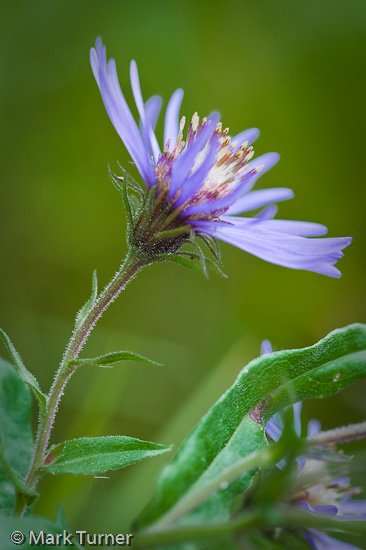 Great Northern Aster, Canadanthus modestus (formerly known as Aster modestus), is unique among the purple asters with very glandular stems and involucral bracts. That last term, for the uninitiated, means the little leaf-like things at the base of the flower head. On this species, the bracts are fairly long, sharply pointed, curving outward, and purplish in color. That makes them pretty distinctive. The stem and involucre are both noticably sticky to the touch, an easy way to tell if a plant is glandular.
Great Northern Aster, Canadanthus modestus (formerly known as Aster modestus), is unique among the purple asters with very glandular stems and involucral bracts. That last term, for the uninitiated, means the little leaf-like things at the base of the flower head. On this species, the bracts are fairly long, sharply pointed, curving outward, and purplish in color. That makes them pretty distinctive. The stem and involucre are both noticably sticky to the touch, an easy way to tell if a plant is glandular.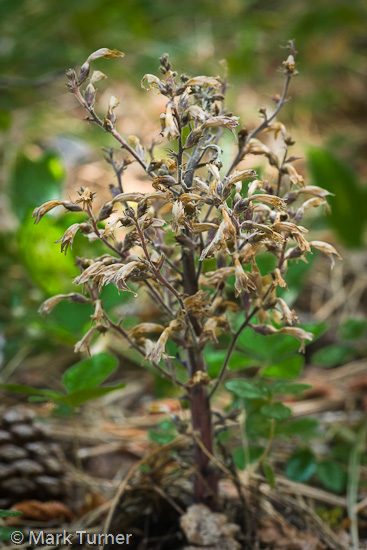 I guess it’s a sign of being a true plant nerd to take off on a day trip halfway across the state to look for one plant that may not even be in bloom.
I guess it’s a sign of being a true plant nerd to take off on a day trip halfway across the state to look for one plant that may not even be in bloom.
 Here’s one of my favorite true alpine plants from the North Cascades. It’s called Moss Campion, Silene acaulis, and you’ll only find it at high elevations in the mountains. Here it’s growing among the rocks on the shoulder of Mount Larrabee with one of the summits of The Pleides in the background.
Here’s one of my favorite true alpine plants from the North Cascades. It’s called Moss Campion, Silene acaulis, and you’ll only find it at high elevations in the mountains. Here it’s growing among the rocks on the shoulder of Mount Larrabee with one of the summits of The Pleides in the background. You can’t get much more alpine than this!
You can’t get much more alpine than this!